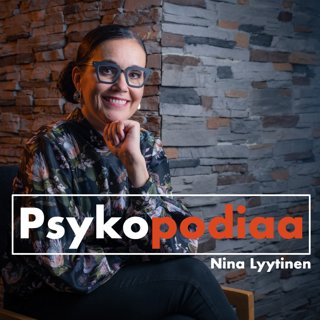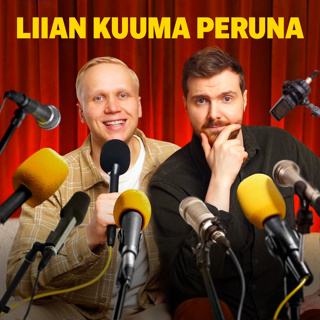
#218 – Hugh White on why Trump is abandoning US hegemony – and that’s probably good
For decades, US allies have slept soundly under the protection of America’s overwhelming military might. Donald Trump — with his threats to ditch NATO, seize Greenland, and abandon Taiwan — seems hell-bent on shattering that comfort.But according to Hugh White — one of the world's leading strategic thinkers, emeritus professor at the Australian National University, and author of Hard New World: Our Post-American Future — Trump isn't destroying American hegemony. He's simply revealing that it's already gone.Links to learn more, video, highlights, and full transcript: https://80k.info/hw“Trump has very little trouble accepting other great powers as co-equals,” Hugh explains. And that happens to align perfectly with a strategic reality the foreign policy establishment desperately wants to ignore: fundamental shifts in global power have made the costs of maintaining a US-led hegemony prohibitively high.Even under Biden, when Russia invaded Ukraine, the US sent weapons but explicitly ruled out direct involvement. Ukraine matters far more to Russia than America, and this “asymmetry of resolve” makes Putin’s nuclear threats credible where America’s counterthreats simply aren’t. Hugh’s gloomy prediction: “Europeans will end up conceding to Russia whatever they can’t convince the Russians they’re willing to fight a nuclear war to deny them.”The Pacific tells the same story. Despite Obama’s “pivot to Asia” and Biden’s tough talk about “winning the competition for the 21st century,” actual US military capabilities there have barely budged while China’s have soared, along with its economy — which is now bigger than the US’s, as measured in purchasing power. Containing China and defending Taiwan would require America to spend 8% of GDP on defence (versus 3.5% today) — and convince Beijing it’s willing to accept Los Angeles being vaporised.Unlike during the Cold War, no president — Trump or otherwise — can make that case to voters.Our new “multipolar” future, split between American, Chinese, Russian, Indian, and European spheres of influence, is a “darker world” than the golden age of US dominance. But Hugh’s message is blunt: for better or worse, 35 years of American hegemony are over. Recorded 30/5/2025.Chapters:00:00:00 Cold open00:01:25 US dominance is already gone00:03:26 US hegemony was the weird aberration00:13:08 Why the US bothered being the 'new Rome'00:23:25 Evidence the US is accepting the multipolar global order00:36:41 How Trump is advancing the inevitable00:43:21 Rubio explicitly favours this outcome00:45:42 Trump is half-right that the US was being ripped off00:50:14 It doesn't matter if the next president feels differently00:56:17 China's population is shrinking, but it doesn't matter01:06:07 Why Hugh disagrees with other realists like Mearsheimer01:10:52 Could the US be persuaded to spend 2x on defence?01:16:22 A multipolar world is bad, but better than nuclear war01:21:46 Will the US invade Panama? Greenland? Canada?!01:32:01 What should everyone else do to protect themselves in this new world?01:39:41 Europe is strong enough to take on Russia01:44:03 But the EU will need nuclear weapons01:48:34 Cancel (some) orders for US fighter planes01:53:40 Taiwan is screwed, even with its AI chips02:04:12 South Korea has to go nuclear too02:08:08 Japan will go nuclear, but can't be a regional leader02:11:44 Australia is defensible but needs a totally different military02:17:19 AGI may or may not overcome existing nuclear deterrence02:34:24 How right is realism?02:40:17 Has a country ever gone to war over morality alone?02:44:45 Hugh's message for Americans02:47:12 Why America temporarily stopped being isolationistTell us what you thought! https://forms.gle/AM91VzL4BDroEe6AAVideo editing: Simon MonsourAudio engineering: Ben Cordell, Milo McGuire, Simon Monsour, and Dominic ArmstrongMusic: Ben CordellTranscriptions and web: Katy Moore
12 Kesä 2h 48min

#217 – Beth Barnes on the most important graph in AI right now — and the 7-month rule that governs its progress
AI models today have a 50% chance of successfully completing a task that would take an expert human one hour. Seven months ago, that number was roughly 30 minutes — and seven months before that, 15 minutes. (See graph.)These are substantial, multi-step tasks requiring sustained focus: building web applications, conducting machine learning research, or solving complex programming challenges.Today’s guest, Beth Barnes, is CEO of METR (Model Evaluation & Threat Research) — the leading organisation measuring these capabilities.Links to learn more, video, highlights, and full transcript: https://80k.info/bbBeth's team has been timing how long it takes skilled humans to complete projects of varying length, then seeing how AI models perform on the same work. The resulting paper “Measuring AI ability to complete long tasks” made waves by revealing that the planning horizon of AI models was doubling roughly every seven months. It's regarded by many as the most useful AI forecasting work in years.Beth has found models can already do “meaningful work” improving themselves, and she wouldn’t be surprised if AI models were able to autonomously self-improve as little as two years from now — in fact, “It seems hard to rule out even shorter [timelines]. Is there 1% chance of this happening in six, nine months? Yeah, that seems pretty plausible.”Beth adds:The sense I really want to dispel is, “But the experts must be on top of this. The experts would be telling us if it really was time to freak out.” The experts are not on top of this. Inasmuch as there are experts, they are saying that this is a concerning risk. … And to the extent that I am an expert, I am an expert telling you you should freak out.What did you think of this episode? https://forms.gle/sFuDkoznxBcHPVmX6Chapters:Cold open (00:00:00)Who is Beth Barnes? (00:01:19)Can we see AI scheming in the chain of thought? (00:01:52)The chain of thought is essential for safety checking (00:08:58)Alignment faking in large language models (00:12:24)We have to test model honesty even before they're used inside AI companies (00:16:48)We have to test models when unruly and unconstrained (00:25:57)Each 7 months models can do tasks twice as long (00:30:40)METR's research finds AIs are solid at AI research already (00:49:33)AI may turn out to be strong at novel and creative research (00:55:53)When can we expect an algorithmic 'intelligence explosion'? (00:59:11)Recursively self-improving AI might even be here in two years — which is alarming (01:05:02)Could evaluations backfire by increasing AI hype and racing? (01:11:36)Governments first ignore new risks, but can overreact once they arrive (01:26:38)Do we need external auditors doing AI safety tests, not just the companies themselves? (01:35:10)A case against safety-focused people working at frontier AI companies (01:48:44)The new, more dire situation has forced changes to METR's strategy (02:02:29)AI companies are being locally reasonable, but globally reckless (02:10:31)Overrated: Interpretability research (02:15:11)Underrated: Developing more narrow AIs (02:17:01)Underrated: Helping humans judge confusing model outputs (02:23:36)Overrated: Major AI companies' contributions to safety research (02:25:52)Could we have a science of translating AI models' nonhuman language or neuralese? (02:29:24)Could we ban using AI to enhance AI, or is that just naive? (02:31:47)Open-weighting models is often good, and Beth has changed her attitude to it (02:37:52)What we can learn about AGI from the nuclear arms race (02:42:25)Infosec is so bad that no models are truly closed-weight models (02:57:24)AI is more like bioweapons because it undermines the leading power (03:02:02)What METR can do best that others can't (03:12:09)What METR isn't doing that other people have to step up and do (03:27:07)What research METR plans to do next (03:32:09)This episode was originally recorded on February 17, 2025.Video editing: Luke Monsour and Simon MonsourAudio engineering: Ben Cordell, Milo McGuire, Simon Monsour, and Dominic ArmstrongMusic: Ben CordellTranscriptions and web: Katy Moore
2 Kesä 3h 47min

Beyond human minds: The bewildering frontier of consciousness in insects, AI, and more
What if there’s something it’s like to be a shrimp — or a chatbot?For centuries, humans have debated the nature of consciousness, often placing ourselves at the very top. But what about the minds of others — both the animals we share this planet with and the artificial intelligences we’re creating?We’ve pulled together clips from past conversations with researchers and philosophers who’ve spent years trying to make sense of animal consciousness, artificial sentience, and moral consideration under deep uncertainty.Links to learn more and full transcript: https://80k.info/nhsChapters:Cold open (00:00:00)Luisa's intro (00:00:57)Robert Long on what we should picture when we think about artificial sentience (00:02:49)Jeff Sebo on what the threshold is for AI systems meriting moral consideration (00:07:22)Meghan Barrett on the evolutionary argument for insect sentience (00:11:24)Andrés Jiménez Zorrilla on whether there’s something it’s like to be a shrimp (00:15:09)Jonathan Birch on the cautionary tale of newborn pain (00:21:53)David Chalmers on why artificial consciousness is possible (00:26:12)Holden Karnofsky on how we’ll see digital people as... people (00:32:18)Jeff Sebo on grappling with our biases and ignorance when thinking about sentience (00:38:59)Bob Fischer on how to think about the moral weight of a chicken (00:49:37)Cameron Meyer Shorb on the range of suffering in wild animals (01:01:41)Sébastien Moro on whether fish are conscious or sentient (01:11:17)David Chalmers on when to start worrying about artificial consciousness (01:16:36)Robert Long on how we might stumble into causing AI systems enormous suffering (01:21:04)Jonathan Birch on how we might accidentally create artificial sentience (01:26:13)Anil Seth on which parts of the brain are required for consciousness (01:32:33)Peter Godfrey-Smith on uploads of ourselves (01:44:47)Jonathan Birch on treading lightly around the “edge cases” of sentience (02:00:12)Meghan Barrett on whether brain size and sentience are related (02:05:25)Lewis Bollard on how animal advocacy has changed in response to sentience studies (02:12:01)Bob Fischer on using proxies to determine sentience (02:22:27)Cameron Meyer Shorb on how we can practically study wild animals’ subjective experiences (02:26:28)Jeff Sebo on the problem of false positives in assessing artificial sentience (02:33:16)Stuart Russell on the moral rights of AIs (02:38:31)Buck Shlegeris on whether AI control strategies make humans the bad guys (02:41:50)Meghan Barrett on why she can’t be totally confident about insect sentience (02:47:12)Bob Fischer on what surprised him most about the findings of the Moral Weight Project (02:58:30)Jeff Sebo on why we’re likely to sleepwalk into causing massive amounts of suffering in AI systems (03:02:46)Will MacAskill on the rights of future digital beings (03:05:29)Carl Shulman on sharing the world with digital minds (03:19:25)Luisa's outro (03:33:43)Audio engineering: Ben Cordell, Milo McGuire, Simon Monsour, and Dominic ArmstrongAdditional content editing: Katy Moore and Milo McGuireTranscriptions and web: Katy Moore
23 Touko 3h 34min

Don’t believe OpenAI’s “nonprofit” spin (emergency pod with Tyler Whitmer)
OpenAI’s recent announcement that its nonprofit would “retain control” of its for-profit business sounds reassuring. But this seemingly major concession, celebrated by so many, is in itself largely meaningless.Litigator Tyler Whitmer is a coauthor of a newly published letter that describes this attempted sleight of hand and directs regulators on how to stop it.As Tyler explains, the plan both before and after this announcement has been to convert OpenAI into a Delaware public benefit corporation (PBC) — and this alone will dramatically weaken the nonprofit’s ability to direct the business in pursuit of its charitable purpose: ensuring AGI is safe and “benefits all of humanity.”Right now, the nonprofit directly controls the business. But were OpenAI to become a PBC, the nonprofit, rather than having its “hand on the lever,” would merely contribute to the decision of who does.Why does this matter? Today, if OpenAI’s commercial arm were about to release an unhinged AI model that might make money but be bad for humanity, the nonprofit could directly intervene to stop it. In the proposed new structure, it likely couldn’t do much at all.But it’s even worse than that: even if the nonprofit could select the PBC’s directors, those directors would have fundamentally different legal obligations from those of the nonprofit. A PBC director must balance public benefit with the interests of profit-driven shareholders — by default, they cannot legally prioritise public interest over profits, even if they and the controlling shareholder that appointed them want to do so.As Tyler points out, there isn’t a single reported case of a shareholder successfully suing to enforce a PBC’s public benefit mission in the 10+ years since the Delaware PBC statute was enacted.This extra step from the nonprofit to the PBC would also mean that the attorneys general of California and Delaware — who today are empowered to ensure the nonprofit pursues its mission — would find themselves powerless to act. These are probably not side effects but rather a Trojan horse for-profit investors are trying to slip past regulators.Fortunately this can all be addressed — but it requires either the nonprofit board or the attorneys general of California and Delaware to promptly put their foot down and insist on watertight legal agreements that preserve OpenAI’s current governance safeguards and enforcement mechanisms.As Tyler explains, the same arrangements that currently bind the OpenAI business have to be written into a new PBC’s certificate of incorporation — something that won’t happen by default and that powerful investors have every incentive to resist.Full transcript and links to learn more: https://80k.info/twChapters:Cold open (00:00:00)Who’s Tyler Whitmer? (00:01:35)The new plan may be no improvement (00:02:04)The public hasn't even been allowed to know what they are owed (00:06:55)Issues beyond control (00:11:02)The new directors wouldn’t have to pursue the current purpose (00:12:06)The nonprofit might not even retain voting control (00:16:58)The attorneys general could lose their enforcement oversight (00:22:11)By default things go badly (00:29:09)How to keep the mission in the restructure (00:32:25)What will become of OpenAI’s Charter? (00:37:11)Ways to make things better, and not just avoid them getting worse (00:42:38)How the AGs can avoid being disempowered (00:48:35)Retaining the power to fire the CEO (00:54:49)Will the current board get a financial stake in OpenAI? (00:57:40)Could the AGs insist the current nonprofit agreement be made public? (00:59:15)How OpenAI is valued should be transparent and scrutinised (01:01:00)Investors aren't bad people, but they can't be trusted either (01:06:05)This episode was originally recorded on May 13, 2025.Video editing: Simon Monsour and Luke MonsourAudio engineering: Ben Cordell, Milo McGuire, Simon Monsour, and Dominic ArmstrongMusic: Ben CordellTranscriptions and web: Katy Moore
15 Touko 1h 12min

Emergency pod: Did OpenAI give up, or is this just a new trap? (with Rose Chan Loui)
When attorneys general intervene in corporate affairs, it usually means something has gone seriously wrong. In OpenAI’s case, it appears to have forced a dramatic reversal of the company’s plans to sideline its nonprofit foundation, announced in a blog post that made headlines worldwide.The company’s sudden announcement that its nonprofit will “retain control” credits “constructive dialogue” with the attorneys general of California and Delaware — corporate-speak for what was likely a far more consequential confrontation behind closed doors. A confrontation perhaps driven by public pressure from Nobel Prize winners, past OpenAI staff, and community organisations.But whether this change will help depends entirely on the details of implementation — details that remain worryingly vague in the company’s announcement.Return guest Rose Chan Loui, nonprofit law expert at UCLA, sees potential in OpenAI’s new proposal, but emphasises that “control” must be carefully defined and enforced: “The words are great, but what’s going to back that up?” Without explicitly defining the nonprofit’s authority over safety decisions, the shift could be largely cosmetic.Links to learn more, video, and full transcript: https://80k.info/rcl4Why have state officials taken such an interest so far? Host Rob Wiblin notes, “OpenAI was proposing that the AGs would no longer have any say over what this super momentous company might end up doing. … It was just crazy how they were suggesting that they would take all of the existing money and then pursue a completely different purpose.”Now that they’re in the picture, the AGs have leverage to ensure the nonprofit maintains genuine control over issues of public safety as OpenAI develops increasingly powerful AI.Rob and Rose explain three key areas where the AGs can make a huge difference to whether this plays out in the public’s best interest:Ensuring that the contractual agreements giving the nonprofit control over the new Delaware public benefit corporation are watertight, and don’t accidentally shut the AGs out of the picture.Insisting that a majority of board members are truly independent by prohibiting indirect as well as direct financial stakes in the business.Insisting that the board is empowered with the money, independent staffing, and access to information which they need to do their jobs.This episode was originally recorded on May 6, 2025.Chapters:Cold open (00:00:00)Rose is back! (00:01:06)The nonprofit will stay 'in control' (00:01:28)Backlash to OpenAI’s original plans (00:08:22)The new proposal (00:16:33)Giving up the super-profits (00:20:52)Can the nonprofit maintain control of the company? (00:24:49)Could for profit investors sue if profits aren't prioritised? (00:33:01)The 6 governance safeguards at risk with the restructure (00:34:33)Will the nonprofit’s giving just be corporate PR for the for-profit? (00:49:12)Is this good, or not? (00:51:06)Ways this could still go wrong – but reasons for optimism (00:54:19)Video editing: Simon Monsour and Luke MonsourAudio engineering: Ben Cordell, Milo McGuire, Simon Monsour, and Dominic ArmstrongMusic: Ben CordellTranscriptions and web: Katy Moore
8 Touko 1h 2min

#216 – Ian Dunt on why governments in Britain and elsewhere can't get anything done – and how to fix it
When you have a system where ministers almost never understand their portfolios, civil servants change jobs every few months, and MPs don't grasp parliamentary procedure even after decades in office — is the problem the people, or the structure they work in?Today's guest, political journalist Ian Dunt, studies the systemic reasons governments succeed and fail.And in his book How Westminster Works ...and Why It Doesn't, he argues that Britain's government dysfunction and multi-decade failure to solve its key problems stems primarily from bad incentives and bad processes. Even brilliant, well-intentioned people are set up to fail by a long list of institutional absurdities that Ian runs through — from the constant churn of ministers and civil servants that means no one understands what they’re working on, to the “pathological national sentimentality” that keeps 10 Downing Street (a 17th century townhouse) as the beating heart of British government.While some of these are unique British failings, we see similar dynamics in other governments and large corporations around the world.But Ian also lays out how some countries have found structural solutions that help ensure decisions are made by the right people, with the information they need, and that success is rewarded.Links to learn more, video, highlights, and full transcript. Chapters:Cold open (00:00:00)How Ian got obsessed with Britain's endless failings (00:01:05)Should we blame individuals or incentives? (00:03:24)The UK left its allies to be murdered in Afghanistan (to save cats and dogs) (00:09:02)The UK is governed from a tiny cramped house (00:17:54)“It's the stupidest conceivable system for how to run a country” (00:23:30)The problems that never get solved in the UK (00:28:14)Why UK ministers have no expertise in the areas they govern (00:31:32)Why MPs are chosen to have no idea about legislation (00:44:08)Is any country doing things better? (00:46:14)Is rushing inevitable or artificial? (00:57:20)How unelected septuagenarians are the heroes of UK governance (01:01:02)How Thatcher unintentionally made one part of parliament work (01:10:48)Maybe secrecy is the best disinfectant for incompetence (01:14:17)The House of Commons may as well be in a coma (01:22:34)Why it's in the PM's interest to ban electronic voting (01:33:13)MPs are deliberately kept ignorant of parliamentary procedure (01:35:53)“Whole areas of law have fallen almost completely into the vortex” (01:40:37)What's the seed of all this going wrong? (01:44:00)Why won't the Commons challenge the executive when it can? (01:53:10)Better ways to choose MPs (01:58:33)Citizens’ juries (02:07:16)Do more independent-minded legislatures actually lead to better outcomes? (02:10:42)"There’s no time for this bourgeois constitutional reform bulls***" (02:16:50)How to keep expert civil servants (02:22:35)Improving legislation like you’d improve Netflix dramas (02:34:34)MPs waste much of their time helping constituents with random complaints (02:39:59)Party culture prevents independent thinking (02:43:52)Would a written constitution help or hurt? (02:48:37)Can we give the PM room to appoint ministers based on expertise and competence? (02:51:51)Would proportional representation help? (02:56:20)Proportional representation encourages collaboration but does have weaknesses (02:58:51)Alternative electoral systems (03:07:44)This episode was originally recorded on January 30, 2025.Video editing: Simon MonsourAudio engineering: Ben Cordell, Milo McGuire, Simon Monsour, and Dominic ArmstrongMusic: Ben CordellCamera operator: Jeremy ChevillotteTranscriptions and web: Katy Moore
2 Touko 3h 14min

Serendipity, weird bets, & cold emails that actually work: Career advice from 16 former guests
How do you navigate a career path when the future of work is uncertain? How important is mentorship versus immediate impact? Is it better to focus on your strengths or on the world’s most pressing problems? Should you specialise deeply or develop a unique combination of skills?From embracing failure to finding unlikely allies, we bring you 16 diverse perspectives from past guests who’ve found unconventional paths to impact and helped others do the same.Links to learn more and full transcript.Chapters:Cold open (00:00:00)Luisa's intro (00:01:04)Holden Karnofsky on just kicking ass at whatever (00:02:53)Jeff Sebo on what improv comedy can teach us about doing good in the world (00:12:23)Dean Spears on being open to randomness and serendipity (00:19:26)Michael Webb on how to think about career planning given the rapid developments in AI (00:21:17)Michelle Hutchinson on finding what motivates you and reaching out to people for help (00:41:10)Benjamin Todd on figuring out if a career path is a good fit for you (00:46:03)Chris Olah on the value of unusual combinations of skills (00:50:23)Holden Karnofsky on deciding which weird ideas are worth betting on (00:58:03)Karen Levy on travelling to learn about yourself (01:03:10)Leah Garcés on finding common ground with unlikely allies (01:06:53)Spencer Greenberg on recognising toxic people who could derail your career and life (01:13:34)Holden Karnofsky on the many jobs that can help with AI (01:23:13)Danny Hernandez on using world events to trigger you to work on something else (01:30:46)Sarah Eustis-Guthrie on exploring and pivoting in careers (01:33:07)Benjamin Todd on making tough career decisions (01:38:36)Hannah Ritchie on being selective when following others’ advice (01:44:22)Alex Lawsen on getting good mentorship (01:47:25)Chris Olah on cold emailing that actually works (01:54:49)Pardis Sabeti on prioritising physical health to do your best work (01:58:34)Chris Olah on developing good taste and technique as a researcher (02:04:39)Benjamin Todd on why it’s so important to apply to loads of jobs (02:09:52)Varsha Venugopal on embracing uncomfortable situations and celebrating failures (02:14:25)Luisa's outro (02:17:43)Audio engineering: Ben Cordell, Milo McGuire, Simon Monsour, and Dominic ArmstrongContent editing: Katy Moore and Milo McGuireTranscriptions and web: Katy Moore
24 Huhti 2h 18min






















